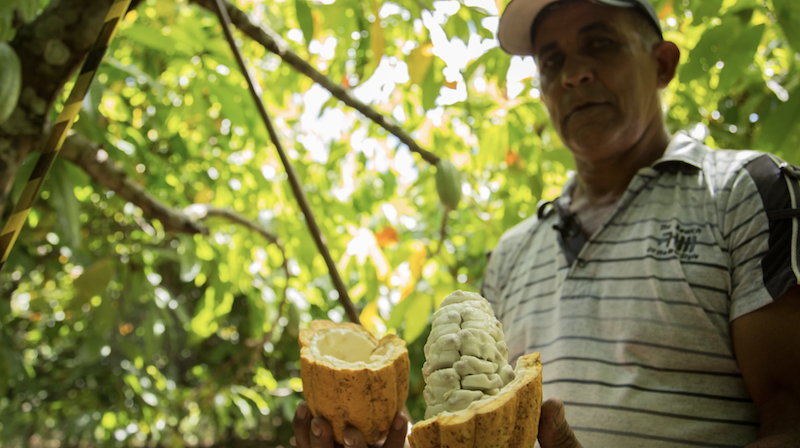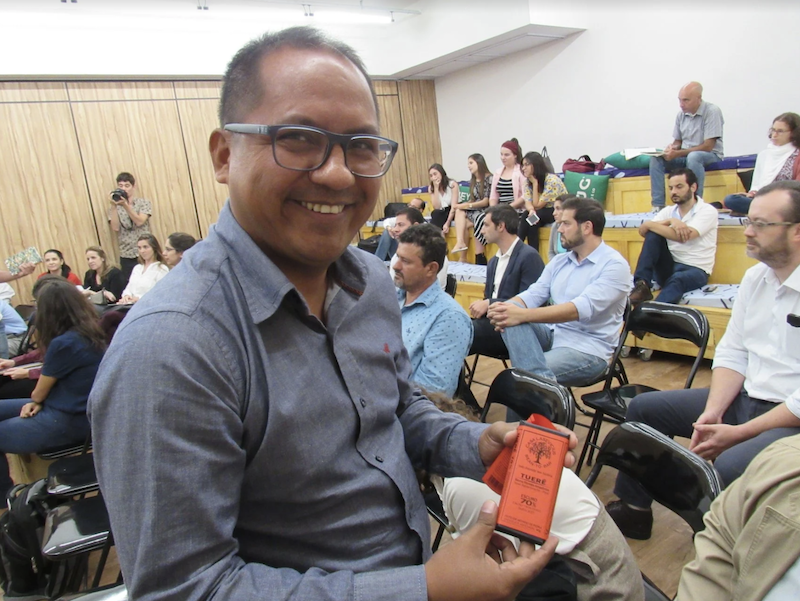
Pictured: José Antonio de Oliveira, family farmer. Photo credit: André Marques
Highlighting the Role of Family Farmers In Mitigation Strategies
Earlier this month, at a special roundtable event in Sao Paulo, Solidaridad presented a new study to estimate greenhouse gas emissions and evaluate future scenarios for land use management in an average family farm in the Amazon.
This study, Carbon Balance in Family Agricultural Production in the Amazon: Scenarios and Opportunities is conducted in Portuguese and was developed in partnership with civil society organization Imaflora. Speaking of the study's significance, Rodrigo Castro, Solidaridad Country Manager says:
"Until now, family farmers have been disregarded in discussions about greenhouse gas emissions. Now, through this study, their role is highlighted and can be used in mitigation strategies.
This study was done in Tuerê! Imagine, if you extrapolate this to the Amazon biome, what it would be like. ”
Promoting Low-carbon Agriculture Among Family Producers in The Amazon
The focus of Solidaridad’s work is on cocoa and livestock producers and is focussed within the ‘Inclusive and Sustainable Territories in the Amazon’ initiative in the region of Pará. To further enhance awareness and understanding of this project, the Solidaridad team created this video below. I
Tuerê, where this study was conducted, is among the largest rural settlements in Latin America. In the late 1990s, deforestation rates among rural settlements in Tuerê began to soar. The settlement faced major challenges such as illegal logging, inefficiency in land regulation, and land speculation.
A total of 54% of this settlement is covered by pastures under cattle breeding and rearing systems. A further 20% is used for cocoa growing systems and the remaining 26% is covered by remnants of native forest.
Growing Cocoa in Degraded Areas to Restore Forests
Explaining the methodology used, Mariana Pereira, Program Officer, says:
"We spent a few days in the settlement, visited demonstration plots and collected qualitative and quantitative data. Each scenario considered the rate of deforestation, changes in land use, changes in livestock management, soil conditions and the characteristics of the cocoa systems.”
“We sought to understand which combination of these variables are needed to reach a carbon balance on farm level. Understanding cocoa alone was not enough. Cocoa can work as an excellent alternative for carbon sink but, at the same, be coupled with a totally degrading cattle ranching.”
This study used a set of calculators to estimate family farm emissions in the Amazon. Some key conclusions include:
-
Livestock is the largest contributor to greenhouse gas emissions. Specifically, pasture degradation and livestock management systems are the main sources of emissions. These emissions are partially offset by the removal of carbon from -12.1 and -0.5 tCO2e / ha / year in the areas covered with cocoa and forests, respectively.
-
Cocoa cultivation can benefit from the following improved management practices. The full adoption of shade systems in cocoa cultivation would remove 16.2 tCO2e / ha / year and produce 83% more almonds, which would be associated with 19% less GHG per tonne of cocoa beans produced.
Solidaridad seeks to understand the risks and opportunities for family agriculture in the Amazon region and to collaborate to improve public and sectoral policies for low carbon agriculture.

